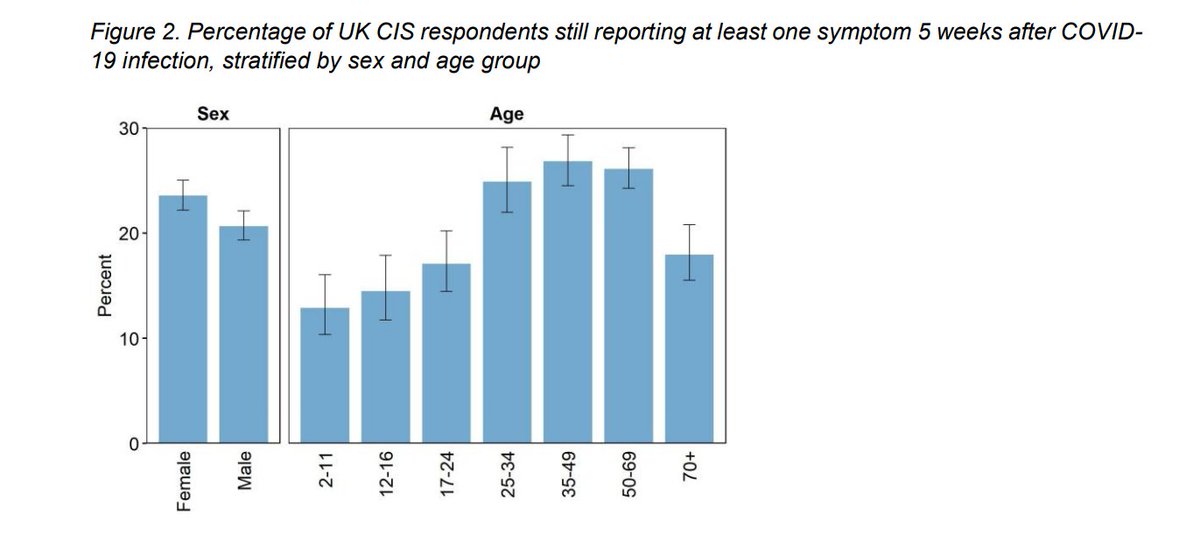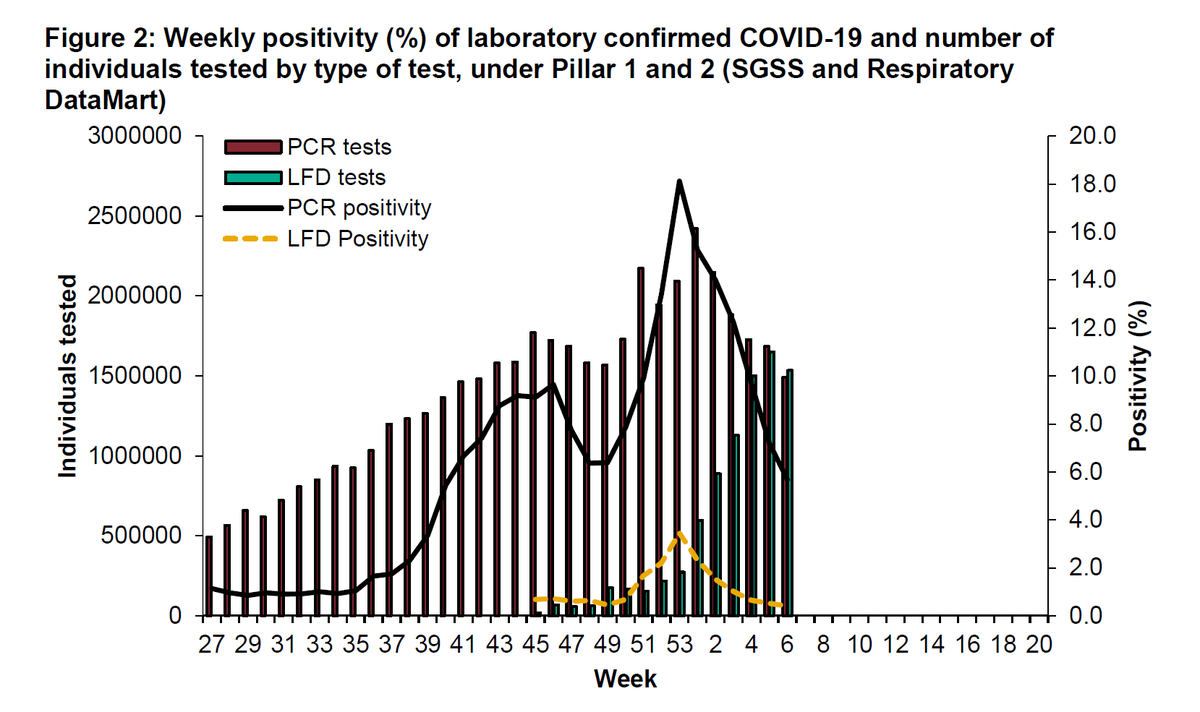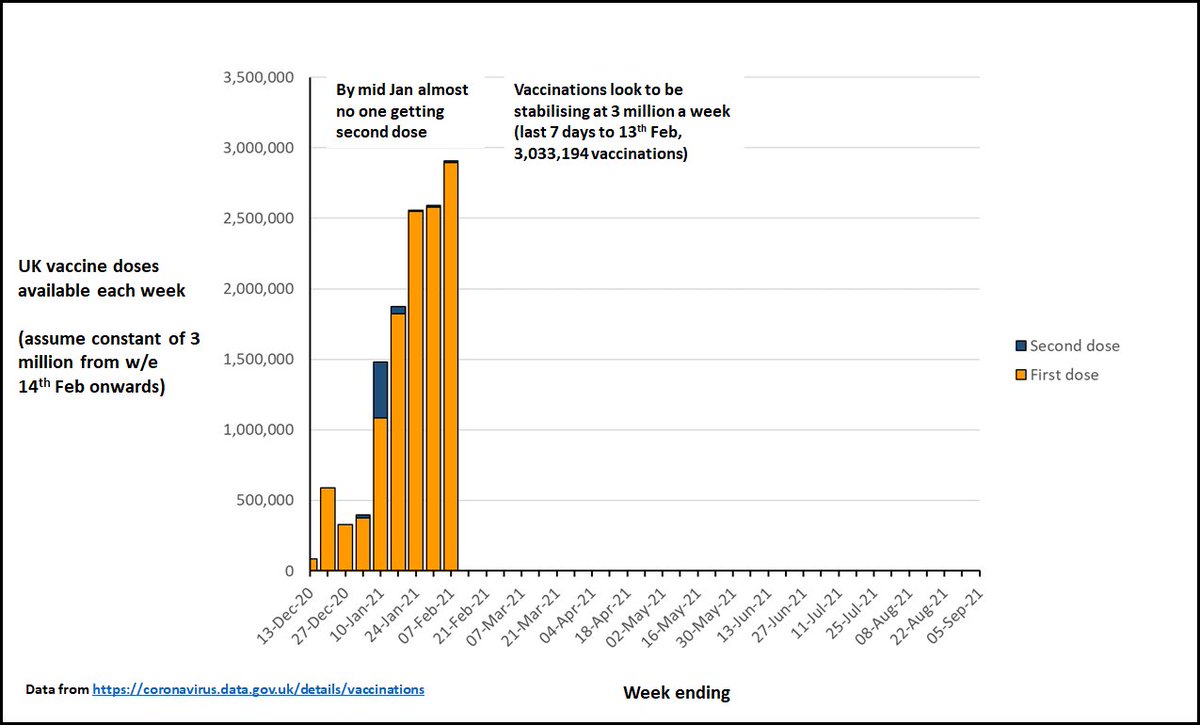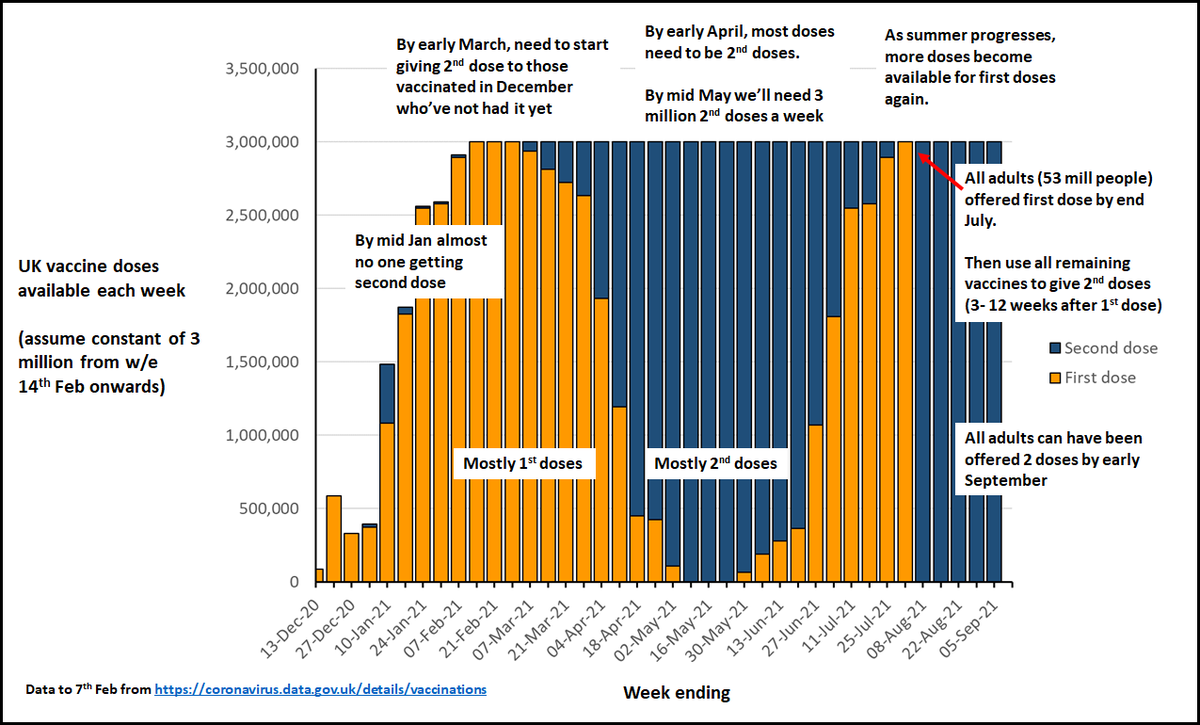
LONG THREAD (21 tweets): As schools return this week in England, am I optimistic or pessimistic about Covid right now?
TLDR: Both - but veering pessimistic. But the policy shifts to move me into optimism are NOT that big!
Let’s start with the optimism & end with the worries.
TLDR: Both - but veering pessimistic. But the policy shifts to move me into optimism are NOT that big!
Let’s start with the optimism & end with the worries.
2. The vaccine roll out is going amazingly well. Over 30% of adult population in England has now been vaccinated and we are on track to offer everyone a first dose by July – and perhaps even earlier. Uptake has also been much higher than anticipated. 
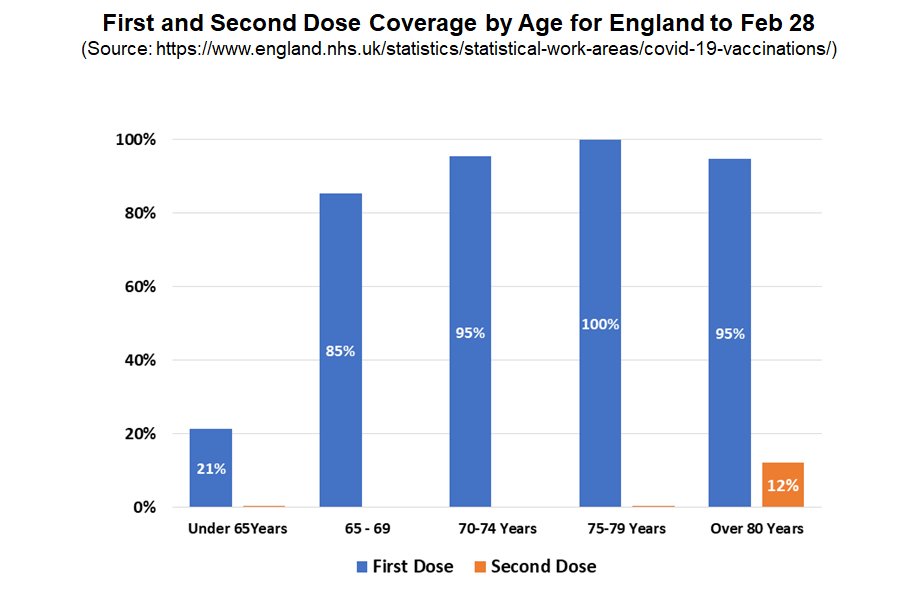
3. Not just that, but the vaccines work better than expected. They are not only v effective at preventing illness, hospitalisation & death but are also effective at reducing transmission – this means vaxxed much less likely to spread covid to others.
vox.com/future-perfect…
vox.com/future-perfect…
4. And after flattening a couple of weeks ago, cases are dropping faster again… Is this vaccines starting to combine with lockdown restrictions (esp care home & health care workers being several weeks out from first dose)? 

5. Lockdown has also worked better than I was expecting – I was worried (as were others) that the restrictions & support for isolation & workplaces wouldn’t be enough to bring cases down quickly with the new more transmissible strain. 

6. Indoor spaces are not opening up until mid April at the earliest according to the roadmap (EXCEPT schools – more of that later) with gyms, hairdressers, shops… and indoor household mixing, indoor pubs *potentially* 5 weeks later
bbc.co.uk/news/explainer…
bbc.co.uk/news/explainer…
7. IF (again more later) we can keep R down to 0.85-0.9 as we open (higher than now), we could be at 500-1000 confirmed cases a day by mid May & could keep cases reducing over summer w most adults vaxxed until we reach v low levels & stay there with minimal restrictions.
8. That's the optimistic scenario.
So what are the potential problems? Why am I hesitating to be optimistic?
(tip: Remember the a-d problems in next tweet!)
So what are the potential problems? Why am I hesitating to be optimistic?
(tip: Remember the a-d problems in next tweet!)
9. The optimistic scenario relies on: a) the vaccines doing almost all the heavy lifting of keeping cases as we open up; b) being able to open schools up AND keep cases reducing (R<1); c) no new variants popping up that resist the vaccines; d) on cases getting low everywhere
10. On a): Vaccines can do, and will do, a lot of heavy lifting. But even in Israel (which has same variant as us) where a high percentage of all adults have been vaxxed, cases are still relatively high & are plateauing at 4x their lowest numbers 

11. On b): SAGE thinks opening schools all at once likely to push R over 1 (ie cases ⬆️). Other UK nations doing a phased opening. The big difference between this lockdown & November was schools. Cases rose in the SE last Nov. Most school staff & parents haven’t been vaxxed yet. 

12. That said, Scotland doing well 2 weeks after primary schools opened & France has successfully kept its schools open whole time. But both are doing more mitigation than England – we can & must make schools safer. Ultimately we need to vax kids too.
osf.io/qg4bj/
osf.io/qg4bj/
13. On c): if we tolerate cases at current(ish) levels, then we DO risk new vax-resistant variants emerging here, esp while we are still rolling vax out & millions are on 1 dose. We are also at high risk of importing new variants – our border policies are nowhere strict enough
14. A year ago, over 1000 separate seeding events launched the pandemic here. Last summer, travel reseeded covid in places that were near max suppression like Ireland & Scotland. Selection pressure on covid is increasing rapidly. Our border policy is basically a big fat gamble 

15. A new vax resistant variant risks a whole new wave, new lockdowns, waiting for updated vaccines and re-delivering them to people already vaxxed. It risks more stress for the NHS, more deaths, more people living with long Covid and another very difficult winter.
16. On d), last year we saw areas w stubbornly high cases. We’re seeing it again now (see this thread
london.gov.uk/sites/default/…
https://twitter.com/chrischirp/status/1365347413922377729?s=20). Basically, the inequalities that covid has so blatantly exposed risk Covid becoming a disease of poverty, like TB before it.
london.gov.uk/sites/default/…

17. A-D are SOLVABLE things, by supporting vax pgm with tried & tested public health measures such as excellent test & trace (particularly supported isolation), safer workspaces, safer schools, tackling poverty, addressing vaccine hesitancy & stricter border policy THIS year.
18. Vaccination makes many of these things EASIER, but not less important!
Tackling poverty & inequality obv much harder, but underlies the fundamentals of better public health, for covid and everything else.
Tackling poverty & inequality obv much harder, but underlies the fundamentals of better public health, for covid and everything else.
19. So my pessimism comes from the fact that current gov strategy is relying almost entirely on vaccination. Basically, it’s leaving a route out of the pandemic this year to a lot of chance. The govt is crossing its fingers and hoping it’ll get away with it.
20. Maybe we'll get lucky. What I find so frustrating is that not that much more effort makes a route out of pandemic this year *so so much more likely*.
But without govt doing more to address those four issues A-D, I am veering towards pessimism.
But without govt doing more to address those four issues A-D, I am veering towards pessimism.
21. So I am torn. We’ll know a lot more by end April: will vax pgm offset opening? But the importation of new variants is the big risk that we are just not doing enough about.
I hope we'll be lucky but I wish with all my heart that we weren't relying so much on luck. /END
I hope we'll be lucky but I wish with all my heart that we weren't relying so much on luck. /END
PS Even under the most optimistic scenario, the NHS has been battered and needs time, understanding and funding to recover. The pressures are NOT over given the massive care backlogs that have accrued & hundreds of thousands of people living with long covid.
PPS I'm staying in the UK this year. Minimal foreign travel is best bet for 2021.
I'm not saying shut borders forever - I'm saying if we can prevent 3rd wave this year, we'll be in much better place next year with fully vaxxed pop (inc kids) & knowledge of emergent variants.
I'm not saying shut borders forever - I'm saying if we can prevent 3rd wave this year, we'll be in much better place next year with fully vaxxed pop (inc kids) & knowledge of emergent variants.
• • •
Missing some Tweet in this thread? You can try to
force a refresh







